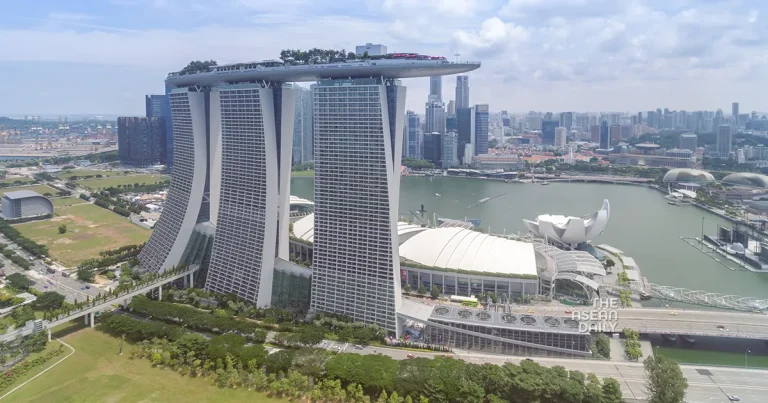23-5-2024 (SINGAPORE) The Singapore government has chosen to uphold its GDP growth projection for 2024, maintaining the forecast range between 1% and 3% after the economy exhibited a 2.7% year-on-year expansion in the first quarter of the year, according to an official statement released on Thursday.
The quarterly growth figure aligned with the Ministry of Trade and Industry’s (MTI) advance estimates and outpaced the 2.2% increase recorded in the final three months of 2023. Economic analysts polled by Reuters had anticipated a 2.5% GDP growth rate for the opening quarter.
As outlined by the MTI, Singapore’s economic performance in Q1 2024 was chiefly propelled by robust activity in the finance and insurance, transportation and storage, and wholesale trade sectors.
The finance and insurance domain witnessed a 6.5% year-on-year surge, improving upon the 5.4% growth registered in the previous quarter. This upswing was facilitated by a marked increase in transaction volumes across most asset classes, heightened credit intermediation activity, and firm growth within the insurance and auxiliary activities segments.
Meanwhile, the transportation and storage sector accelerated to a 6.8% year-on-year growth rate, up from 2.8% in Q4 2023. Contributing factors included vigorous expansion in the air transport segment, with the total number of air passengers handled at Changi Airport during the quarter surpassing pre-COVID levels. The water transport segment also experienced an uptick, buoyed by an increase in container throughput and sea cargo volume at Singapore’s ports.
The wholesale trade sector grew by 1.5% year-on-year, outperforming the 0.2% growth witnessed in the preceding quarter. This positive trajectory was driven by increased output in the fuels and chemicals segment, encompassing both the petroleum and petroleum products, and chemicals and chemical products sub-segments. Additionally, the “others” segment, comprising a diverse array of products such as metals, timber, construction materials, household equipment and furniture, also contributed to the sector’s growth.
Supplementing these insights, the MTI stated, “On a quarter-on-quarter seasonally adjusted basis, the economy expanded by 0.1%, moderating from the 1.2% growth in the preceding quarter.”
According to the MTI, the global economic landscape has remained resilient since the Economic Survey of Singapore in February 2024. This assessment was underpinned by “better than expected” economic growth in the United States and China during Q1 2024, attributable largely to stronger-than-anticipated domestic and external demand, respectively.
“Growth in regional economies like South Korea and Taiwan was supported by the global electronics recovery, led by strong demand for AI-related chips,” the MTI remarked.
The trade ministry forecasted that GDP growth in major economies would “taper gradually in the immediate quarters due to tight financial conditions, before picking up alongside anticipated policy rate cuts later in the year.”
Delving into specifics, the MTI noted that the US growth outlook had improved slightly owing to the resilience of its labour market and an AI-driven surge in investments. However, the robust performance of the US economy in Q1, coupled with persistent inflation, is likely to delay policy rate cuts by the US Federal Reserve. Higher interest rates sustained for a more extended period will exert downward pressure on the US economy in the near term, before an easing of monetary policy in the latter part of the year facilitates a resurgence in growth.
Within the Eurozone, investments and industrial activity are expected to remain subdued given restrictive financial conditions and sluggish external demand. Conversely, consumer spending is projected to experience a firmer recovery in the second half of 2024, buoyed by gradually improving consumer confidence and anticipated policy rate cuts by the European Central Bank as inflationary pressures ease.
In China, the introduction of more government support measures is anticipated to bolster GDP growth beyond initial expectations. Specifically, manufacturing investment is likely to remain robust due to government backing for strategic manufacturing industries and the announced trade-in program, while infrastructure investment will receive a boost from heightened government spending.
“In addition, recently-announced property market support measures are likely to help stabilise the property market, which should lead to a modest recovery in consumption in the later part of the year,” the MTI added.
Furthermore, GDP growth across most Southeast Asian economies is forecast to be underpinned by resilient domestic demand, the continued recovery in tourism, as well as a resurgence in external demand.




